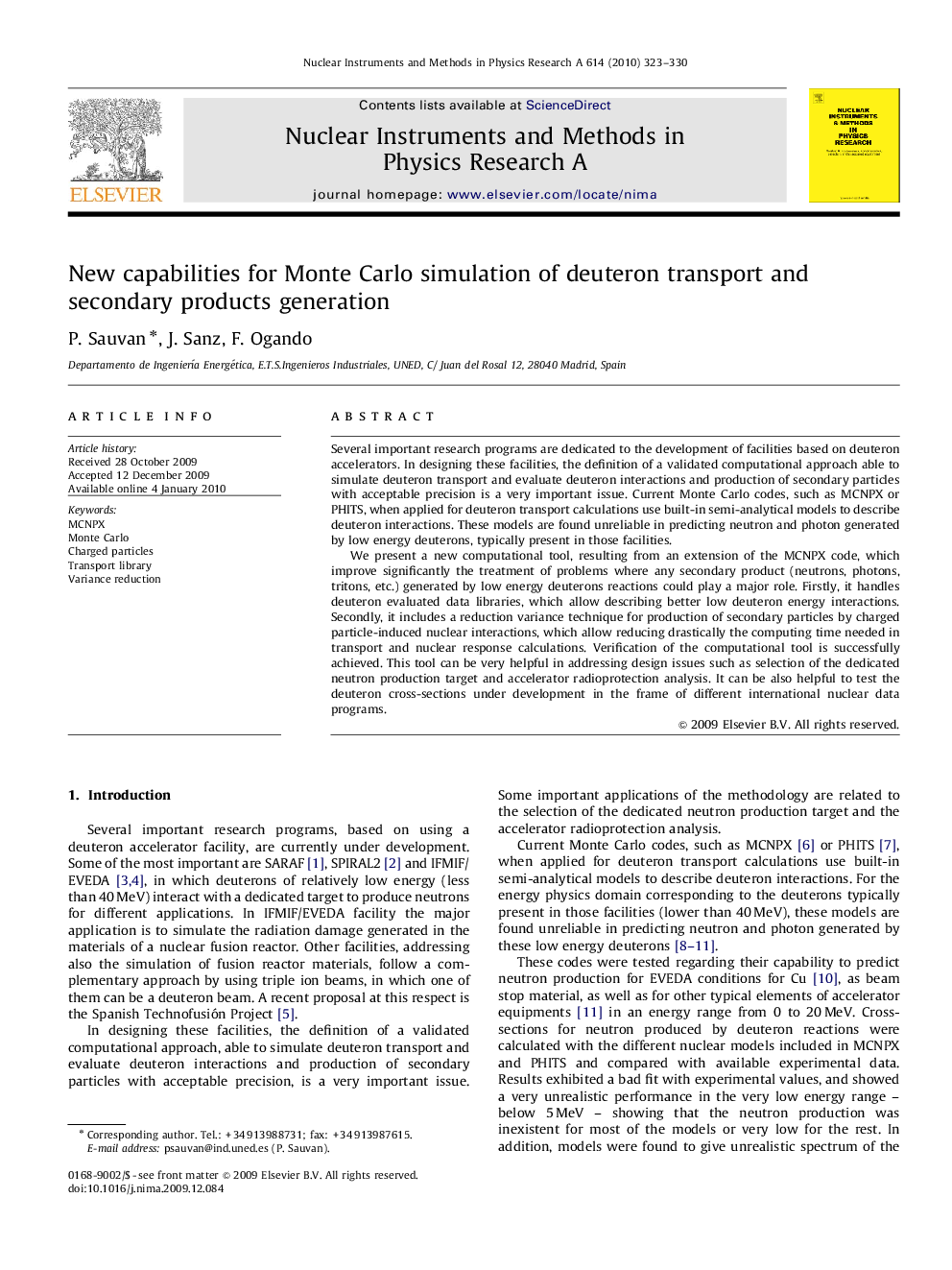| Article ID | Journal | Published Year | Pages | File Type |
|---|---|---|---|---|
| 1826660 | Nuclear Instruments and Methods in Physics Research Section A: Accelerators, Spectrometers, Detectors and Associated Equipment | 2010 | 8 Pages |
Several important research programs are dedicated to the development of facilities based on deuteron accelerators. In designing these facilities, the definition of a validated computational approach able to simulate deuteron transport and evaluate deuteron interactions and production of secondary particles with acceptable precision is a very important issue. Current Monte Carlo codes, such as MCNPX or PHITS, when applied for deuteron transport calculations use built-in semi-analytical models to describe deuteron interactions. These models are found unreliable in predicting neutron and photon generated by low energy deuterons, typically present in those facilities.We present a new computational tool, resulting from an extension of the MCNPX code, which improve significantly the treatment of problems where any secondary product (neutrons, photons, tritons, etc.) generated by low energy deuterons reactions could play a major role. Firstly, it handles deuteron evaluated data libraries, which allow describing better low deuteron energy interactions. Secondly, it includes a reduction variance technique for production of secondary particles by charged particle-induced nuclear interactions, which allow reducing drastically the computing time needed in transport and nuclear response calculations. Verification of the computational tool is successfully achieved. This tool can be very helpful in addressing design issues such as selection of the dedicated neutron production target and accelerator radioprotection analysis. It can be also helpful to test the deuteron cross-sections under development in the frame of different international nuclear data programs.
